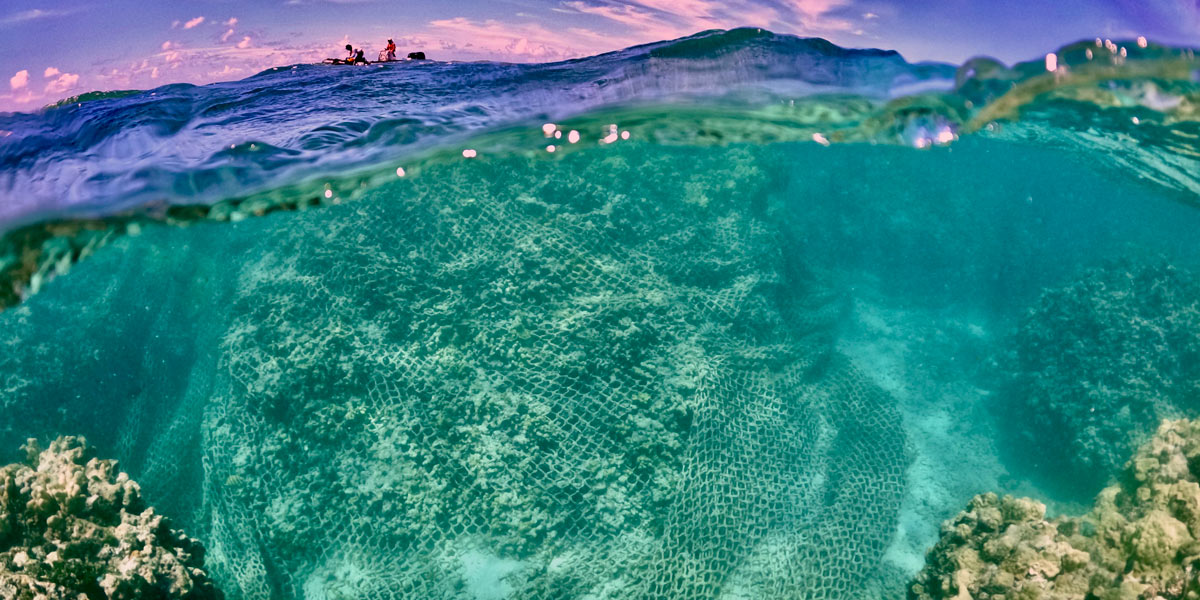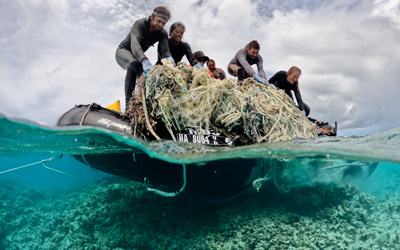News
86,000 Pounds of Ghost Nets Removed from a Single Reef in Papahānaumokuākea

A team from the Papahānaumokuākea Marine Debris Project (PMDP) recently returned to Honolulu aboard the 185-ft ship M/V Imua with 97,295 pounds of marine debris removed from reefs and beaches of Papahānaumokuākea Marine National Monument. 86,000 pounds consisted of ghost nets cleaned from a single reef.

The reef, known as Kamokuokamohoaliʻi (island of the shark god) or Maro Reef, lies in the heart of the Monument. Kamokuokamohoaliʻi is an open-ocean coral reef with no emergent dry land that sits over 800 miles from Honolulu. The shallow (less than ten ft.) portion of the reef that accumulates marine debris is roughly eight miles in length, with narrow spiderwebs of coral reefs criss-crossing a wide central lagoon. These shallow coral gardens support a vibrant ecosystem teeming with life: endangered Hawaiian monk seals, honu (green sea turtles), rays, sharks, and thousands of reef fish, many of them found only in Hawaiʻi. Kamokukamohoaliʻi is one of the most diverse coral reefs in all of Hawaiʻi, harboring 37 coral species.
Ghost nets, which are large tangled masses of lost or discarded fishing nets made of plastic, routinely snag on the shallow coral reefs of the Hawaiian islands, smothering and breaking the living coral colonies.
Over twelve intensive days of work at Kamokuokamohoaliʻi, the team surveyed 1,100 acres of coral reef and successfully removed 86,000 pounds of ghost nets from that area.



